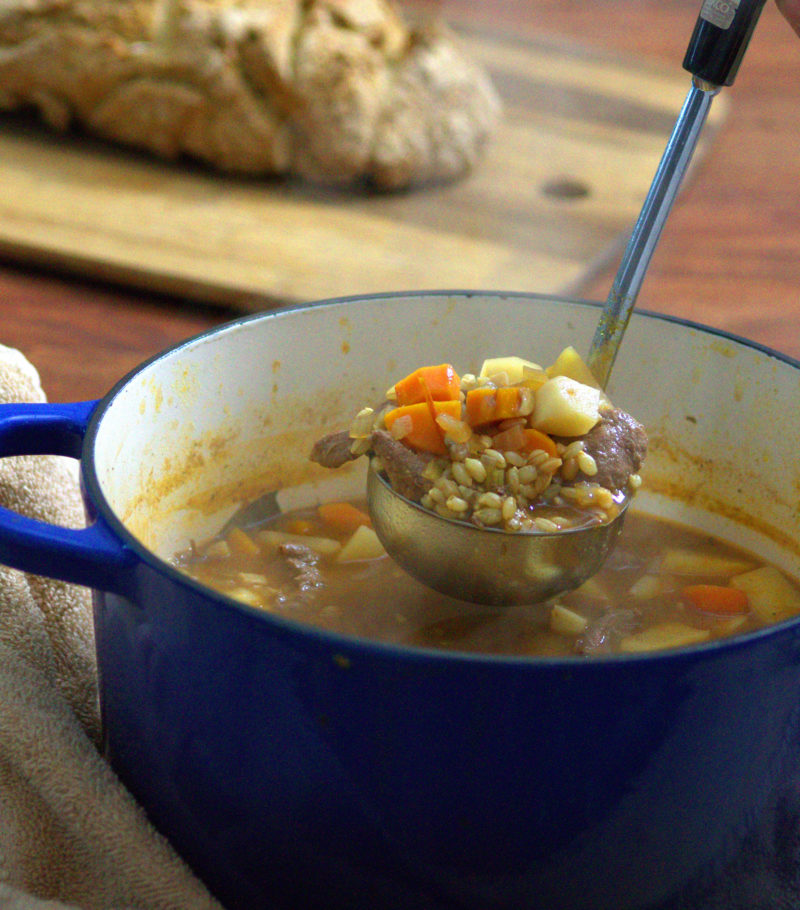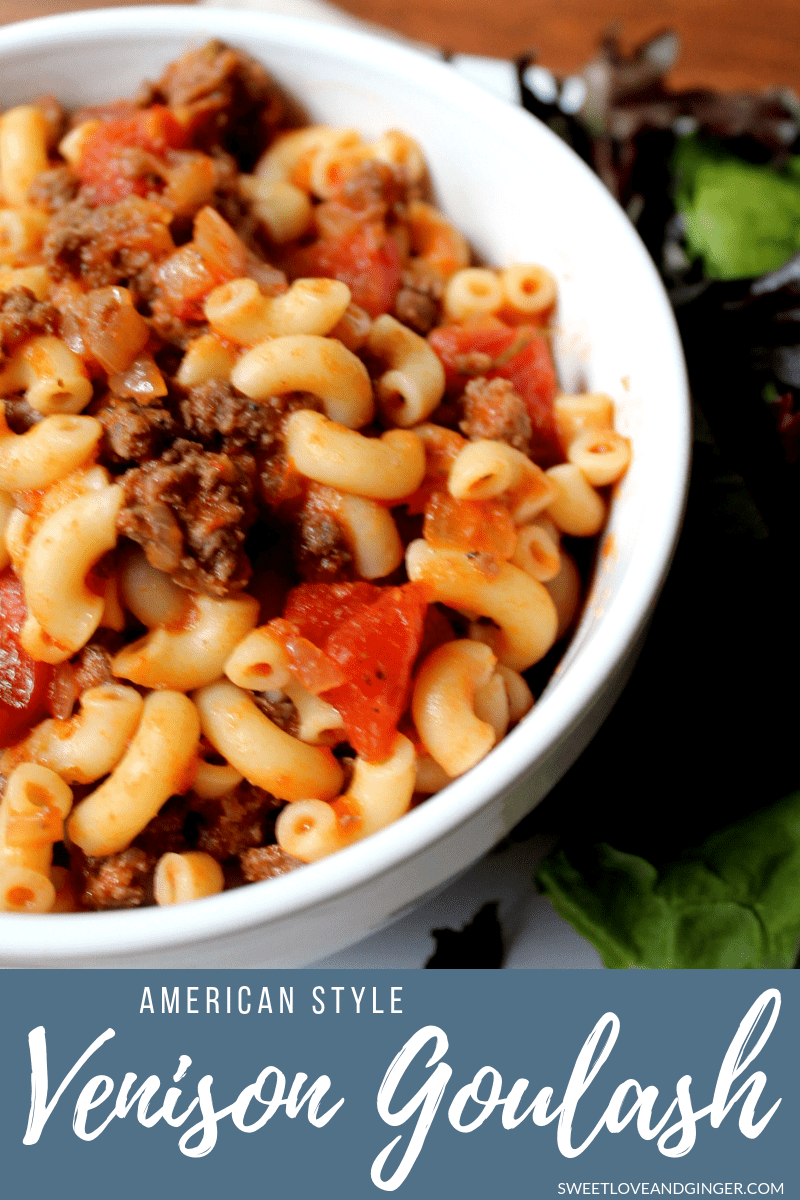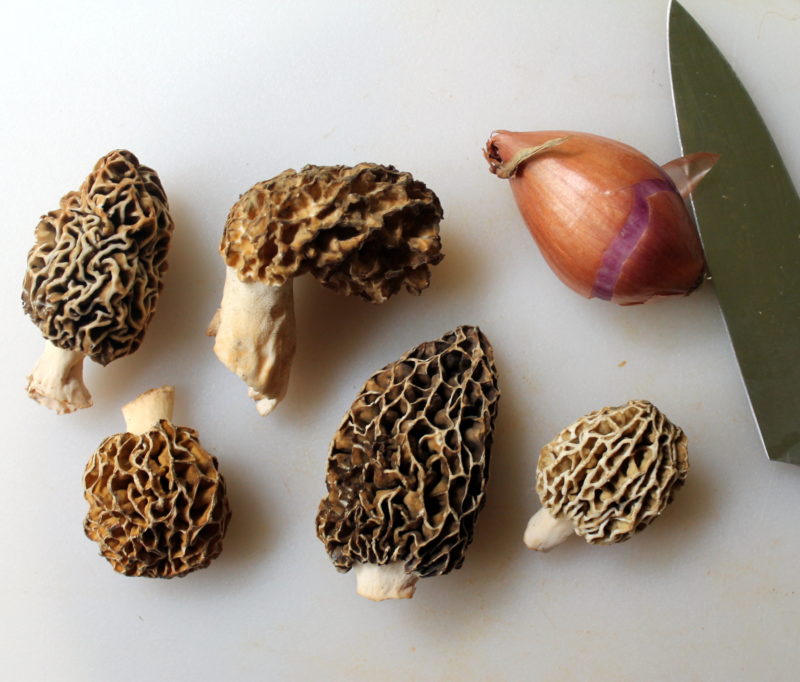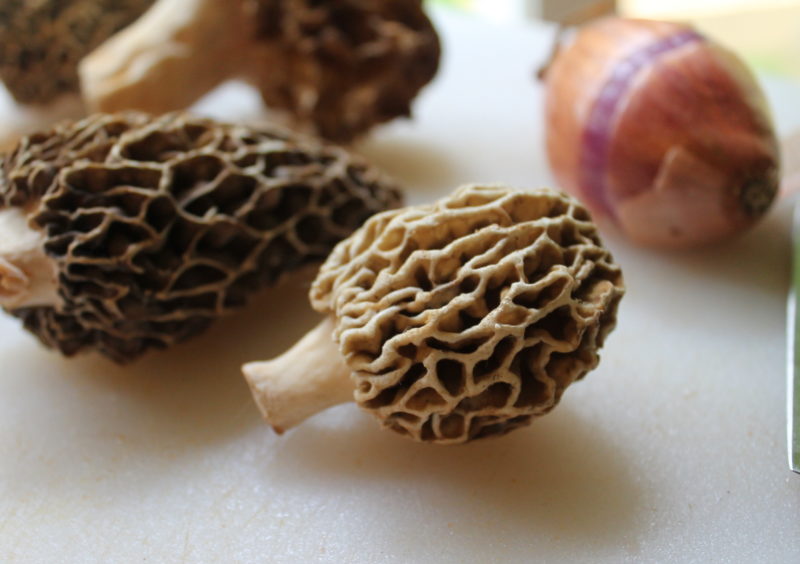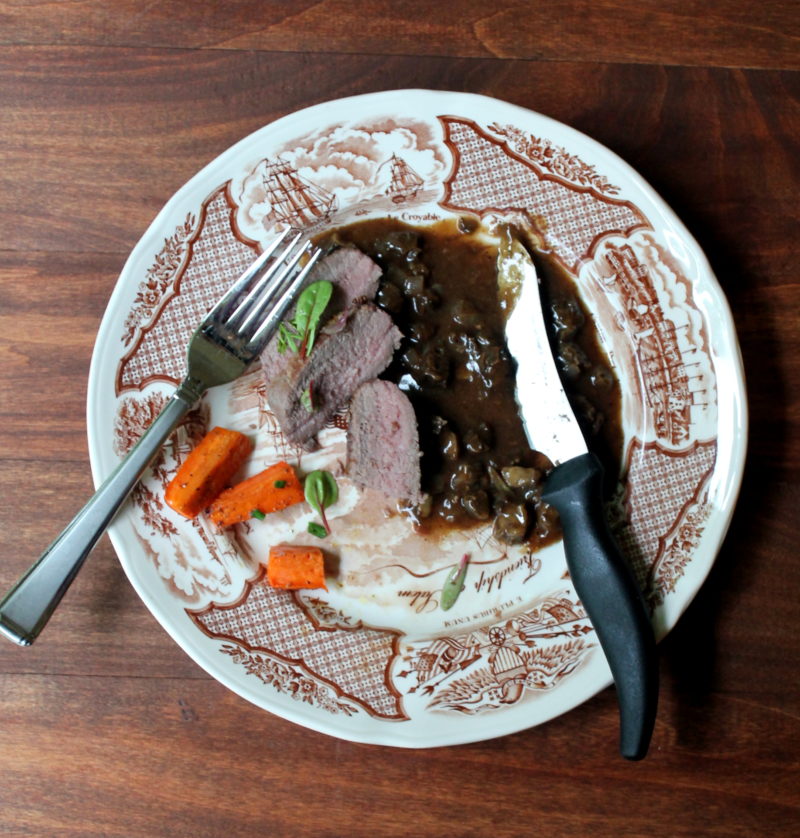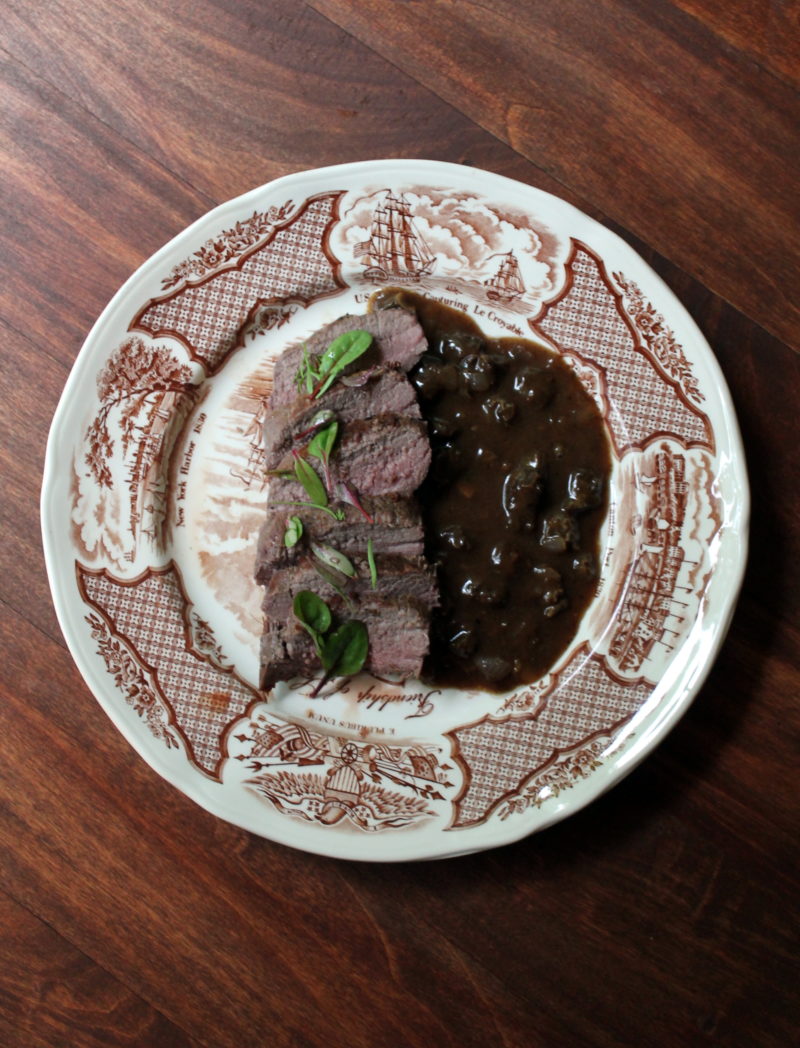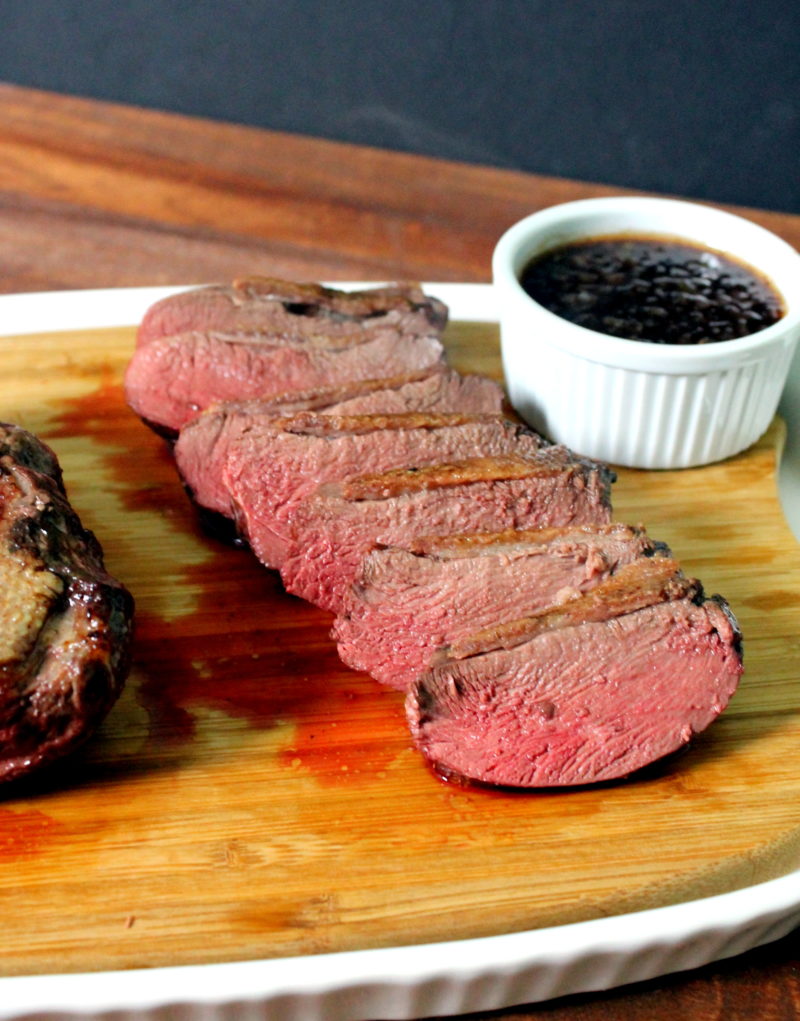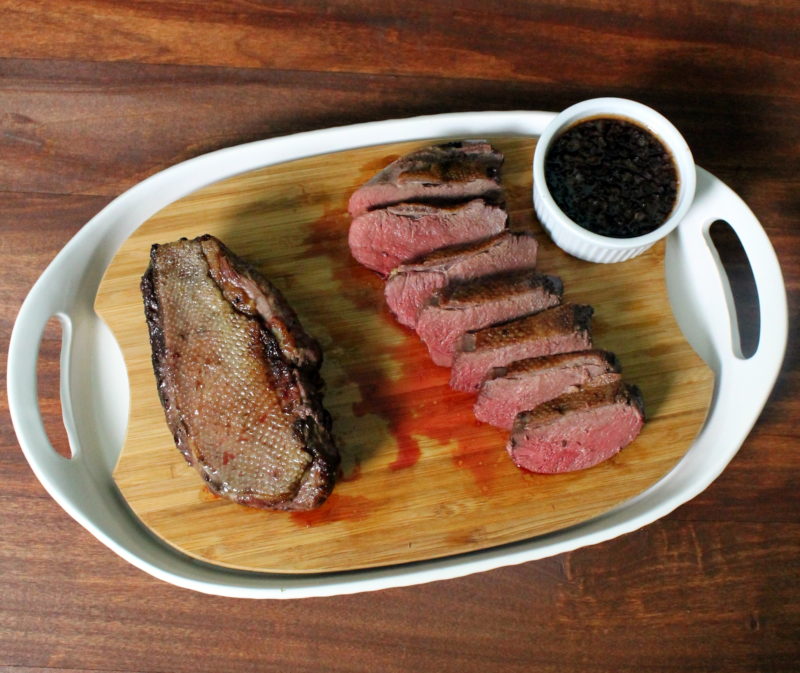The cold weather has begun to settle over us here in the northeast. We have gotten a few snowfall (though not much has stuck), a few freezing rains, and plenty of below freezing weather. I find myself reaching for wool socks and cozy sweaters as I get ready for work, and stuffing the pocket of all my coats with spare gloves just in case. It’s officially that time of year….
Wild Game
Venison Sausage Hash with Potatoes & Apples
Okay, so this might very well be my new favorite recipe.
I know I say that a lot but seriously you guys this one is sooo good.
…
American Style Venison Goulash
The fall weather has officially started to make itself known. I regret to admit that the tops of trees are just beginning to turn and mornings are starting to get chilly. As much as I love fall I always still lament the end of summer. The carefree days of hiking and boating are some of my favorite.
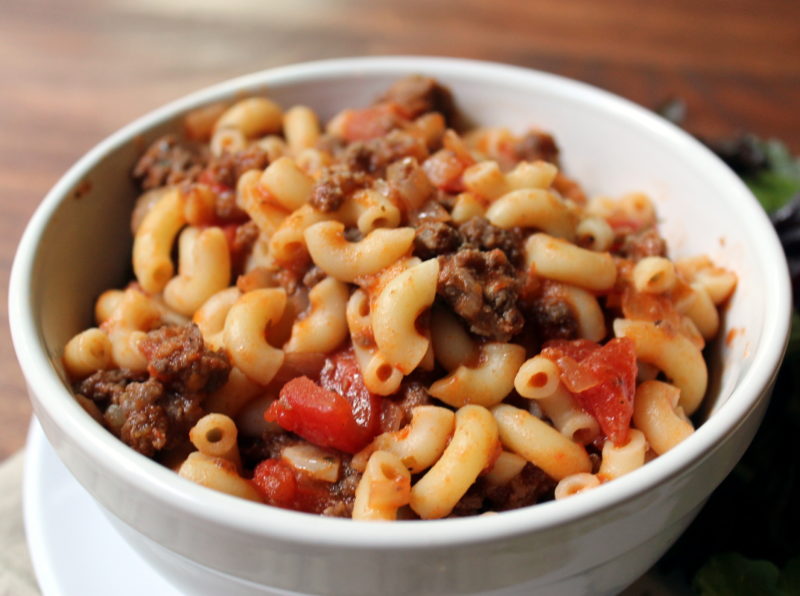
Venison with Morel Sauce
Since spring has come Chuck and I have started to make walks around the yard a regular habit. It usually happens when we get home from work or on Saturday mornings before breakfast or even just randomly throughout the day if we are home. It’s a great way to look and talk over the projects that we have going and see how the garden is doing. It’s also a really great time to talk and reflect about the day ahead or behind or days far into the future. We have a lot of future plans to talk about between the two of us.
It was on one of these walks that we first stumbled across what looked like morels. Having never picked them without my dad around I sent one home with my mom to make sure before we harvested some. When we bought our house it was surrounded by trees that were owned by our neighbor, who had them removed shortly after we moved in, leaving behind a thick bed of wood chips from the process. These morels were found all along the edge of our property where the wood chips ended. I’m wondering if the small forest (she said it was something like 150 trees) was home to a well-developed morel colony and if these are all that could make their way out from the suppressing wood chips. I suppose we will never know, but I’ll take what I can get from my own back yard.
The first few morels were just sautéed up in a pan with some oil to see what they tasted like, and the second round was put into this dish. I made this meal on a whim last Sunday since it was one of the few nights that Chuck and I had alone together, we decided to have a kind of date night in. We cooked fiddleheads and morels from the back yard, micro greens from the garden, and venison that Chuck got last year. If only my potatoes had gown last year (and not gotten water logged) then all the main portions would have come from our own two hands. Creating a meal from things completely at my own hands is something I would like to make a regular occurrence one day and a goal that I’ve had for a very long time. We are getting closer every day and I’m so excited about that.
- 5 tablespoons of unsalted butter, seperated
- 1 ½ cup chopped fresh morels
- 1 large shallot, chopped
- 1 lb venison roast, steak or loin
- 1 teaspoon of salt
- 1 teaspoon of pepper
- 1 tablespoon flour
- 1 cup venison, beef or vegetable stock
- 1/4 teaspoon thyme
- 1/2 teaspoon pepper
- Salt to taste
- Preheat the oven to 350 degrees.
- In a large, oven proof skillet heat 1 tablespoon of butter over medium high heat. Add the morels and cook for 1 to 2 minutes, until they have released all their water and continue to cook until the water has reduced. Add the shallot and sauté for another 3 to 4 minutes, stirring often. Remove the vegetables from heat and set aside.
- Wipe out the pan and add 2 tablespoons of butter to the pan.
- Generously season the meat with salt and pepper. Then place the meat in the pan. It should sizzle on contact. Sear the meat until a brown crust forms (about 2-3 minutes each) on each side.
- Remove from the stove top and place in the oven to cook for 15 to 20 minutes for rare to medium rare.
- Remove from oven and let stand for 5 to 10 minutes.
- While the meat rests return the pan to medium high heat. Add the final 2 tablespoons of butter and allow it to melt. Add the flour and stir well to make a smooth sauce. Deglaze the pan with the broth, thyme, and pepper and stir until well combined, scraping the browned bits from the bottom of the pan. Add the morel shallot mixture and any liquid back into the pan and cook for 1 to 2 minutes, or until the morels are heated through. Stir to combine and remove from heat.
- Slice the meat and serve atop the morel gravy immediately.
Pan Seared Goose Breast with Cumberland Sauce
If you follow me on instagram you might have seen the awesome new cook book that I got for Christmas, Duck, Duck, Goose, by Hank Shaw. I was super excited to get this book especially because Chuck scored his first goose on Christmas Eve. What are the odds right?
It took us probably way longer than it should have to pluck and gut the goose, but that’s what happens when you have 2 clueless newbs figuring it out as they go. Afterward our back yard was completely covered in feathers. I should have taken pictures of the whole thing, but alas I am not good at remembering the camera at times like this.
Anywhoodles we let the bird rest in the fridge for the holiday and I spent some time reading in my new book and online about how to cook the thing, finding that the breasts unanimously get overdone and dry if roasted whole, so I decided to cut them out and cook them separately. I chose to serve it with Cumberland sauce because the stuff is awesome, obviously.
I was pleasantly surprised to see that one breast was plenty to feed both Chuck and I, leaving the whole other breast for a second meal. These Canada Geese are big guys. I was also pleasantly surprised by the quality of the meat, while the goose itself is pretty fatty the breasts themselves are rather lean (excluding the skin), and tastes remarkably like other red game meats. I was really happy with this dish, and cannot wait for Chuck to get more next year!
- 2 goose breasts, with skin, fat trimmed
- Salt and pepper to taste
- 1 shallot, minced
- ½ cup Port wine
- ¾ cup broth (chicken, or vegetable)
- ½ teaspoon dry mustard
- ¼ teaspoon cayenne
- Zest from one lemon
- Zest of 1 orange
- ¼ cup currant jelly
- Salt and pepper to taste
- Bring the breasts up to room temperature. Pat the breasts dry with a paper towel then salt and pepper both sides. Place the breasts skin side down in a room temperature large steel, or cast iron skillet and place it on the stove. Turn the heat up to medium high until the pan begins to sizzle. Turn the heat down to medium low and cook for roughly 10 to 12 minutes. The skin should be crisp and easily pull away from the pan, if it does not easily pull away continue to allow it to cook.
- Flip the breasts over and immediately salt the skin side. Allow them to cook on this side for 5 to 7 minutes for a medium rare duck or 8 to 9 minutes for a well done duck breast.
- Remove the duck from heat when it’s reached desired doneness. Place it on a cutting board, skin side up and let it stand for 8 to 10 minutes.
- While the goose rests prepare the sauce. Drain the pan of excess fat, leaving about 1 tablespoon in the pan. Return the pan to medium high heat and add the shallot, sautéing for 1 to 2 minutes, until it softens.
- Stir in the Port wine, scraping brown bits from the bottom of the pan. Allow it to simmer until it has reduced to half.
- Add the broth, orange and lemon zest, mustard, and cayenne and stir until well blended. Cook for one minute before adding the currant jelly. Allow it to boil until the jelly has been incorporated and the sauce thickens. Adjust the seasonings and remove from heat.
- Serve the goose breast sliced with sauce on the side.

